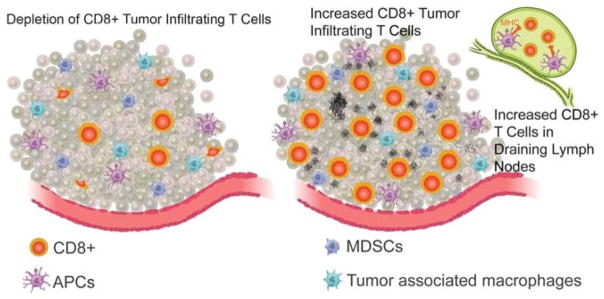FIGURE 3.
Stereotactic body radiotherapy–like regimens appear to be more immunogenic than lower-dose, or conventional, fractionated regimens in preclinical studies. Stereotactic body radiotherapy–like regimens (right) result in greater infiltration of CD8+ T cells in tumor and draining lymph nodes, as well as antigen-presenting cells in draining lymph nodes. This immune infiltration correlates with greater immune-directed tumor destruction, control, and survival. Lower-dose, or conventional, fractionated regimens (left) result in relatively less robust immune infiltration and, when radiation is prolonged for multiple weeks on end, may have immune-depleting effects, particularly on anti–tumor-infiltrating CD8+ T cells, as well as increased recruitment of myeloid derived suppressor cells. APC, antigen-presenting cell; MDSC, myeloid-derived suppressor cell.

